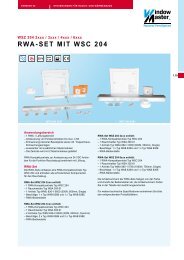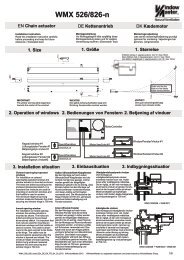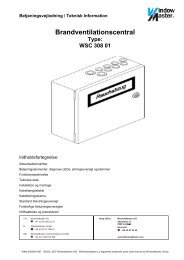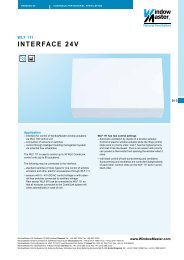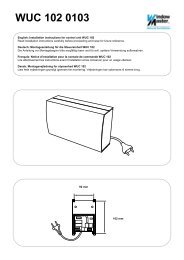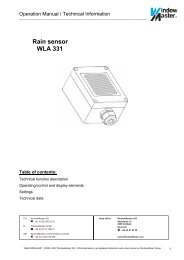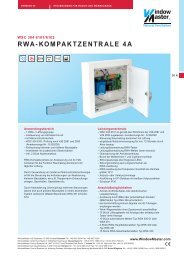ABB i-bus® EIB Universal Interfaces US/U 4.2 US/U ... - WindowMaster
ABB i-bus® EIB Universal Interfaces US/U 4.2 US/U ... - WindowMaster
ABB i-bus® EIB Universal Interfaces US/U 4.2 US/U ... - WindowMaster
You also want an ePaper? Increase the reach of your titles
YUMPU automatically turns print PDFs into web optimized ePapers that Google loves.
<strong>ABB</strong> i-bus ® <strong>EIB</strong><br />
<strong>Universal</strong> <strong>Interfaces</strong><br />
<strong>US</strong>/U 2.2, GH Q631 0074 R0111<br />
<strong>US</strong>/U <strong>4.2</strong>, GH Q631 0070 R0111<br />
Parameter: “Monitoring of the room thermostat”<br />
The cyclical monitoring of the room thermostat is enabled with this parameter.<br />
The telegrams of the room thermostat are transmitted to the electronic actuator<br />
at specific cyclic intervals. If one or more of these telegram sequences<br />
is omitted, there may be a communications fault or a defect in the room<br />
thermostat. If no telegrams are sent to the objects “Telegr. switch” or “Control<br />
vale (PWM)” for the duration of the cyclic monitoring time, the actuator<br />
switches to fault mode and triggers a safety position. The fault mode is finished<br />
as soon as a telegram is received again.<br />
Parameter: “Cyclic monitoring time of room thermostat”<br />
The cyclic monitoring time for the telegrams of the room thermostat is set<br />
in this parameter.<br />
Period = Base x Factor<br />
Parameter: “Position of the valve drive on failure of the control”<br />
This parameter defines the safety position which the actuator triggers in fault<br />
mode. The PWM cycle time T CYC of the control is defined in the parameter<br />
“Cycle time for continuous control”.<br />
Parameter: “Enable object ‘Telegr. fault’”<br />
The object “Telegr. fault” can be enabled in this parameter. It has the object<br />
value “ON” during fault mode. If there is no fault, it has the object value<br />
“OFF”. The object is always sent cyclically. The cyclic transmission time<br />
is identical to the cyclic monitoring time.<br />
Parameter: “Forced positioning”<br />
This parameter enables the forced positioning function. During forced positioning,<br />
the actuator triggers a freely selectable forced positioning. This has the<br />
highest priority i.e. it is not modified by a valve purge or a safety position.<br />
The forced positioning can be activated via the object<br />
“Forced positioning” = “ON” and deactivated via “Forced positioning” = “OFF”.<br />
Parameter: “Valve position during forced positioning”<br />
In this parameter, the valve position triggered by the actuator is defined<br />
during the forced positioning. The PWM cycle time T CYC of the control<br />
is defined in the parameter “Cycle time for continuous control”.<br />
4.9.2 Communication objects<br />
Object: “Telegr. switch”, 1 bit (EIS 1)<br />
This object is visible if the control of the heating actuator is carried out<br />
via a 1 bit object. If the object has the value “ON”, the valve is opened while<br />
the valve is closed if the object has the value “OFF”.<br />
Telegram value: “0” Close valve<br />
“1” Open valve<br />
29



